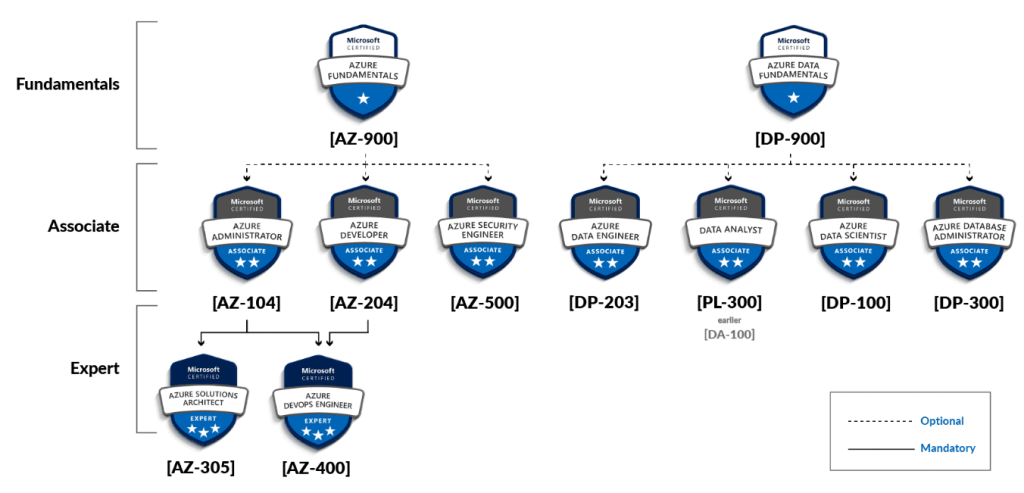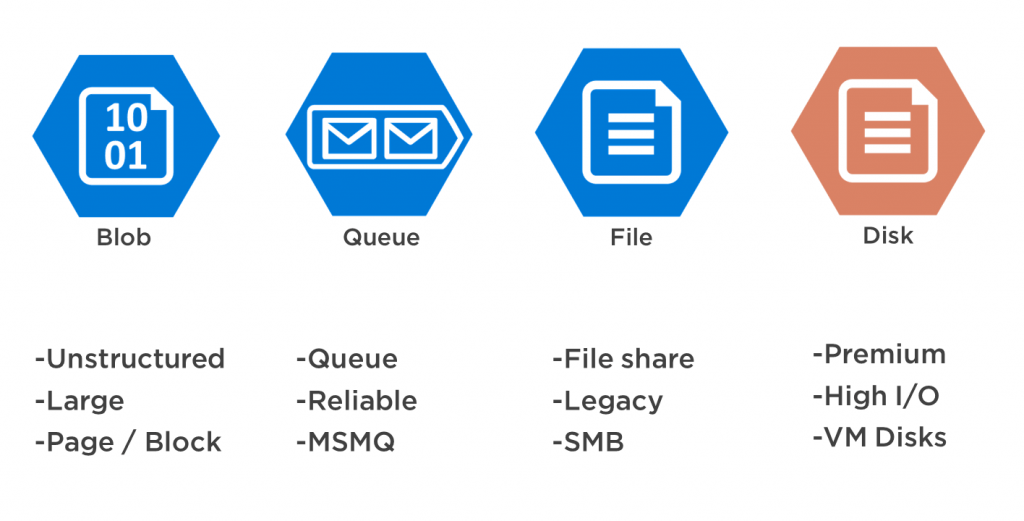
- Introduction to Azure Administration
- Key Responsibilities of an Azure Administrator
- Prerequisites for Becoming an Azure Administrator
- Learning Azure Fundamentals
- Understanding Azure Networking and Security
- Managing Azure Storage and Databases
- Azure Identity and Access Management
- Azure Monitoring and Troubleshooting
- Preparing for the Microsoft Azure Administrator Exam (AZ-104)
- Hands-on Practice and Real-World Experience
- Career Opportunities for Azure Administrators
- Salary and Job Market Trends
- Conclusion
Introduction to Azure Administration
Azure administration manages and maintains Microsoft Azure, a cloud computing platform that provides various services, including virtual machines, databases, networking, and storage. As cloud technology evolves, organizations increasingly rely on cloud services to improve efficiency and scalability and reduce costs. Azure administrators play a crucial role in ensuring these cloud services run smoothly, securely, and cost-effectively. An Azure Administrator Certification manages the Azure environment, including deploying, configuring, and maintaining resources, monitoring performance, and troubleshooting issues. This guide will provide an overview of the key responsibilities, prerequisites, and career opportunities for Azure administrators. We’ll also cover the fundamentals of Azure administration, including networking, storage, identity management, and monitoring, and offer tips for passing the Microsoft Azure Administrator exam (AZ-104).
Key Responsibilities of an Azure Administrator
- Provisioning and deploying resources: This involves creating and managing virtual machines, networks, storage accounts, and other Azure resources.
- Configuring Azure resources: Administrators must ensure that Azure resources are correctly configured for optimal performance, security, and cost-efficiency.
- Managing resource groups: Resources in Azure are organized into resource groups. Administrators create and manage these groups for better organization and ease of access.
- Configuring networking components: Administrators are responsible for setting up virtual networks, subnets, load balancers, and VPNs to connect Azure resources securely.
- Configuring Network Security Groups (NSGs): Using security rules, administrators need to control traffic flow between Azure resources and external networks.
- Managing Azure Active Directory (AD): Administrators ensure that users, groups, and devices are authenticated and authorized to access the Azure environment. They manage roles, permissions, and policies for secure access.
- Role-Based Access Control (RBAC): Azure administrators use RBAC to ensure that users access the right resources appropriately, following the principle of least privilege.
- Managing Azure storage accounts: Administrators create and configure accounts for data storage and backup, ensuring that data is secure, accessible, and scalable.
- Configuring data redundancy: To ensure data availability and durability, administrators configure replication strategies like geo-redundant storage (GRS) or locally redundant storage (LRS).
- Monitoring Azure resources: Administrators use Azure Monitor to track performance, diagnose issues, and ensure the system runs smoothly.
- Troubleshooting issues: When problems arise, administrators investigate performance bottlenecks, service failures, or security incidents using diagnostic tools and logs.
Resource Management:
Azure Networking
Identity and Access Management:
Storage Management:
Monitoring and Troubleshooting:

- Implementing automation: Administrators use Azure automation tools such as Azure Automation Runbooks and Azure Logic Apps to streamline everyday administrative tasks.
- Scaling resources: Administrators are responsible for scaling applications and resources up or down, ensuring that the system remains cost-efficient and meets performance demands.
- Implementing security policies: Administrators implement security controls to protect data and applications in the Azure environment, including encryption, firewalls, and access controls.
- Compliance and auditing: Azure administrators ensure compliance with industry standards and regulatory requirements by auditing activity in the Azure environment.
Automation and Scaling:
Security Management:
Prerequisites for Becoming an Azure Administrator
- Basic IT Knowledge:Familiarity with operating systems, mainly Windows Server and Linux, is essential for administrators, as they will be working with virtual machines and other resources.Understanding basic networking concepts (IP addressing, DNS, DHCP, etc.) is crucial for administrators who must manage Azure virtual networks and VPNs.A basic understanding of Active Directory and cloud computing principles will also be beneficial.
- Knowledge of Microsoft Azure:Understanding how Microsoft Azure works, including its services, regions, and pricing model, is crucial. Administrators must also know how to navigate the Azure portal, Azure CLI, and PowerShell.Learning key services like Azure Virtual Machines, Storage, Networking, and Active Directory is a core component of the Azure administration role.
- Learning Cloud Computing Concepts:Familiarity with cloud computing concepts such as Infrastructure as a Service (IaaS), Platform as a Service (PaaS), and Software as a Service (SaaS) will help in understanding the different Azure services and their usage.Understanding cloud deployment models, including public, private, and hybrid clouds, is essential in Azure.
Learning Azure Fundamentals
To build a strong foundation in Azure, aspiring Azure Administrator Certification should start by learning the fundamentals of cloud computing and Azure. The Microsoft AZ-900 Microsoft Azure Fundamentals certification is a great entry point into Azure.This certification covers the basic concepts of Azure, including Cloud Concepts Understanding cloud models, services, and deployment options.Azure Services Learning about core Azure services, including computing, networking, and storage.Azure Pricing and Support: Understanding Azure’s pricing models, billing, and support plans.Cloud Security Learning about cloud security principles and compliance features.The AZ-900 exam is an ideal way to start with Azure and gain hands-on experience with essential Azure services.
Understanding Azure Networking and Security
Networking is one of the most crucial aspects of Azure administration. Azure administrators must have a strong understanding of how to design and implement network architectures, secure those networks, and ensure seamless communication between cloud resources. This includes managing Virtual Networks (VNets), which allow the connection of resources within Azure, and organizing these VNets into subnets to improve traffic management and security. Administrators also use Network Security Groups (NSGs) to control network traffic and secure resources within a virtual network. To ensure secure connections between on-premises infrastructure and Azure, administrators can implement VPN or ExpressRoute solutions. Additionally, Azure Firewall plays a key role in securing the network perimeter and monitoring traffic to safeguard against threats.In parallel, security remains a top priority in Azure administration. Azure administrators need to ensure the security of the entire Azure environment. Key security concepts to master include Azure Active Directory (AAD) for identity management and single sign-on (SSO), which helps manage user identities across cloud services. Role-Based Access Control (RBAC) is used to manage user and resource permissions, ensuring that the right individuals have appropriate access to resources.
Managing Azure Storage and Databases
Azure provides multiple storage options, including Blob, Disk, and File Storage. An administrator must understand the different storage solutions, how to configure them and optimize performance.
- Creating and managing storage accounts.
- Data redundancy Choosing the appropriate replication strategy for high availability.
- Azure SQL Database Manage cloud-based databases and understand backup and restore options.
- Cosmos DB: Working with globally distributed, multi-model databases.
- Creating and managing users and groups in Azure AD.
- Configuring Single Sign-On (SSO) and Multi-Factor Authentication (MFA) for secure access.
- Assigning roles and managing permissions using RBAC.
Key concepts include:
Azure Identity and Access Management
Azure Identity and Access Management (IAM) ensures secure access to resources in the Azure environment. Administrators use Azure Active Directory (AAD) to manage users and groups and Role-Based Access Control (RBAC) to manage permissions.
Key areas include:

Azure Monitoring and Troubleshooting
Monitoring and troubleshooting are essential skills for an Azure administrator, as they help ensure the smooth operation of the Azure environment. Azure provides a range of tools to monitor the health and performance of resources. Azure Monitor offers comprehensive metrics, logs, and alerts for Azure resources, allowing administrators to keep track of system performance. Azure Log Analytics helps analyze log data from various sources, enabling the identification of potential issues and insights into resource utilization. Azure Service Health monitors the status of Azure services, providing alerts on any service interruptions or ongoing issues that might affect the environment.
Preparing for the Microsoft Azure Administrator Exam (AZ-104)
The AZ-104 Microsoft Azure Administrator exam is the certification exam designed for Azure administrators. To effectively prepare for this exam, candidates should focus on several key areas, including managing Azure subscriptions and resources, implementing and managing storage solutions, deploying and managing virtual machines, and configuring and managing virtual networks. Additionally, candidates should be well-versed in managing identities and access within the Azure environment. Microsoft offers a variety of study materials to assist candidates in their preparation, including online training resources, detailed documentation, and practice exams. By focusing on these areas and utilizing the provided materials, candidates can confidently approach the AZ-104 exam and advance their Azure administrator skills.
Hands-on Practice and Real-world Experience
Hands-on practice is critical to mastering Azure administration. Microsoft provides a free Azure trial that allows users to experiment with various services and configurations. Additionally, working on real-world projects, such as setting up virtual machines, creating networks, and managing databases, will enhance your skills.
Career Opportunities for Azure Administrators
The demand for skilled Azure administrators is growing as more companies move to the cloud. As an Azure administrator, you can pursue roles such as:
- Azure Administrator:Manage and configure Azure resources.
- Cloud Solutions Architect: Design cloud infrastructure and services.
- DevOps Engineer: Focus on automating deployments and infrastructure management.
- Cloud Security Engineer: I specialize in securing cloud environments and networks.
Salary and Job Market Trends
The demand for cloud professionals, particularly Azure administrators, has risen significantly. According to various job platforms, the average salary for an Azure administrator in the United States ranges between $70,000 and $120,000 per year, depending on experience and location. As organizations migrate to the cloud, the need for skilled Azure Administrator Certification will only grow, making it a promising career path for individuals with the right skills and certification.
Conclusion
Becoming an Azure Administrator is a rewarding career path for IT professionals looking to specialize in cloud computing. With organizations increasingly adopting Microsoft Azure, skilled administrators are in high demand to manage cloud infrastructure efficiently, securely, and cost-effectively.To succeed in this role, aspiring Azure administrators must build a strong foundation in cloud computing, networking, security, and storage. Earning the Microsoft Azure Administrator Certification (AZ-104) certification is a key milestone that validates your expertise and enhances job prospects. However, beyond certification, hands-on experience and continuous learning are essential to mastering Azure administration.





